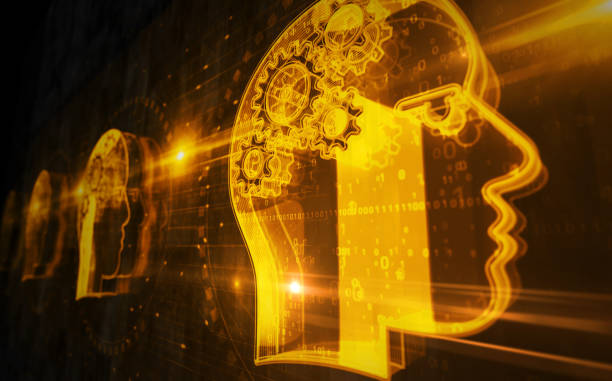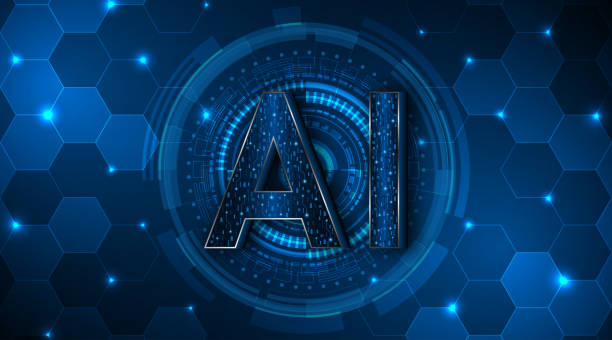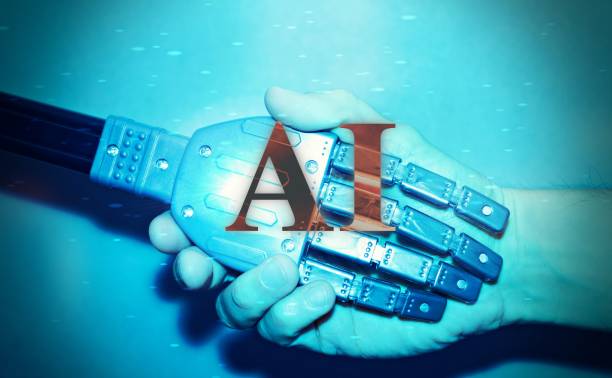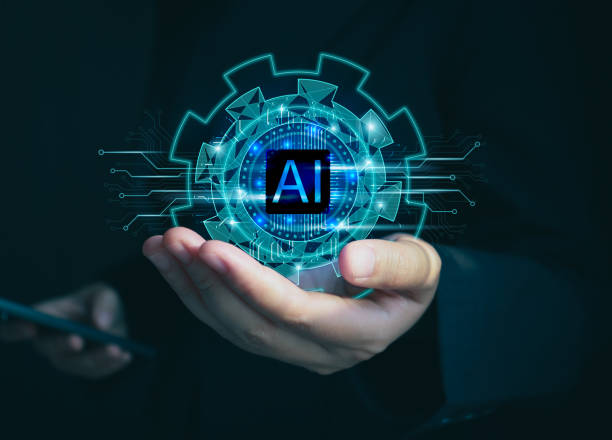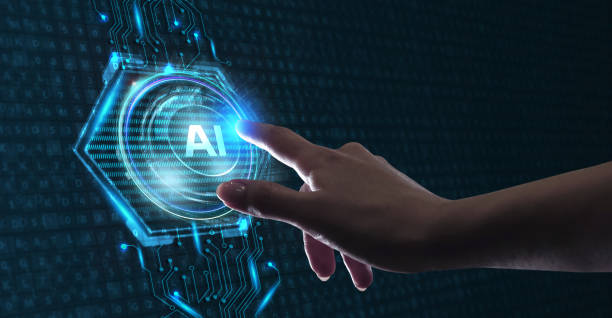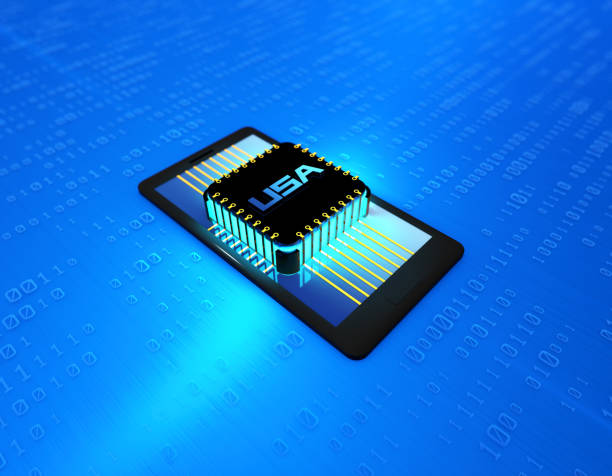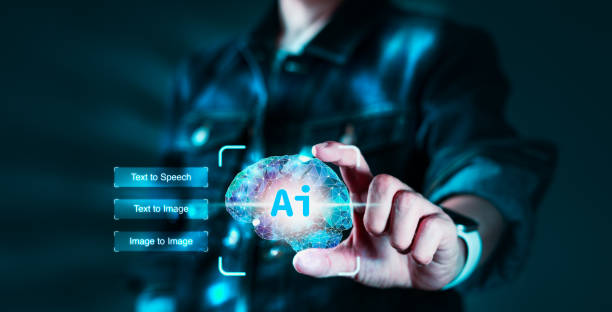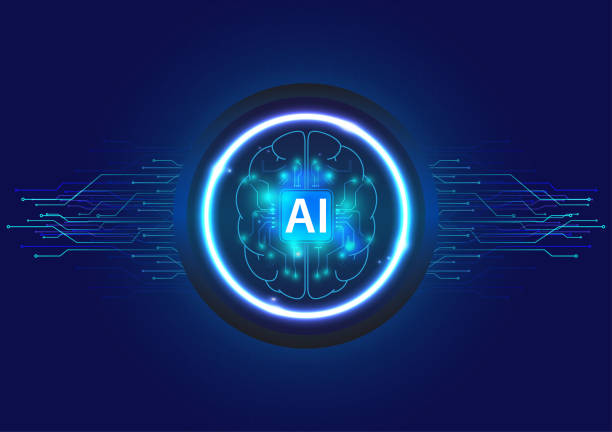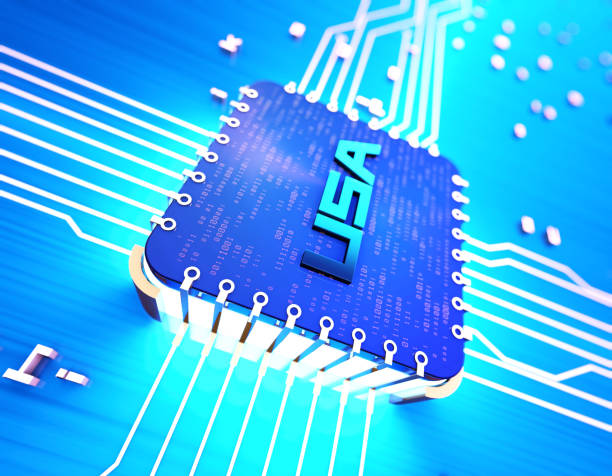What is an Artificial Intelligence Robot and How Does it Work?
#Artificial Intelligence Robot is a combination of two important fields of technology: robotics and artificial intelligence.
Simply put, an artificial intelligence robot is a physical or virtual machine capable of performing tasks that typically require human intelligence.
These tasks can include learning, problem solving, pattern recognition, natural language understanding, and decision making.
#Artificial_Intelligence allows the robot to interact with its environment and improve its performance based on the data it collects.
The way an artificial intelligence robot works is that data is first collected through sensors (such as cameras, microphones, and touch sensors).
Then, this data is processed by artificial intelligence algorithms.
Algorithms can identify patterns based on machine learning and make appropriate decisions.
Finally, the robot acts on artificial intelligence commands using actuators (such as motors, arms, and speakers).
The applications of artificial intelligence robots are very extensive and include areas such as industry, medicine, education, and customer service.
Does your current website reflect your brand’s credibility as it should? Or does it drive away potential customers?
Rasweb, with years of experience in designing professional corporate websites, is your comprehensive solution.
✅ A modern, beautiful website tailored to your brand identity
✅ Significant increase in lead generation and new customers
⚡ Contact Rasweb now for a free corporate website design consultation!
The Main Components of an Artificial Intelligence Robot
An artificial intelligence robot consists of several main components that work together to enable intelligent operation.
These components include hardware, software, sensors, actuators, and a control system.
Hardware includes the physical body of the robot, processors, memory, and other electronic components.
Software includes artificial intelligence algorithms, operating system, and application programs that allow the robot to perform its tasks.
Sensors collect information from the environment and help the robot understand the world around it.
Actuators allow the robot to interact with its environment and perform actions such as moving, grabbing objects, and speaking.
The control system is responsible for coordinating between the various components of the robot and executing artificial intelligence commands.
For example, an industrial artificial intelligence robot may use vision sensors to detect defective parts, actuators to separate defective parts, and a control system to coordinate these activities.
This robot can automatically ensure product quality without human intervention.
Click here to preview your posts with PRO themes ››
Applications of Artificial Intelligence Robots in Various Industries
Artificial intelligence robots have extensive applications in various industries and help improve productivity, reduce costs, and increase quality.
In the manufacturing industry, artificial intelligence robots are used for repetitive, dangerous, and precise tasks such as welding, painting, and assembly.
In the medical industry, artificial intelligence robots are used in precise surgeries, patient rehabilitation, and disease diagnosis.
In the agricultural industry, artificial intelligence robots are used for harvesting crops, spraying fields, and intelligent irrigation.
In the transportation industry, artificial intelligence robots are used in self-driving cars, drones, and logistics systems.
In the service industry, artificial intelligence robots are used in call centers, hotels, and restaurants to provide services to customers.
These robots can answer customer questions, record orders, and provide information.
The use of artificial intelligence robots not only increases efficiency but can also reduce human errors and improve safety.
Below is a table of application examples of artificial intelligence robots in various industries:
| Industry | Application of Artificial Intelligence Robot |
|---|---|
| Manufacturing | Assembly of parts, welding, quality inspection |
| Medicine | Robotic surgeries, rehabilitation, disease diagnosis |
| Agriculture | Harvesting crops, spraying, intelligent irrigation |
Advantages and Disadvantages of Using Artificial Intelligence Robots
The use of artificial intelligence robots has numerous advantages and disadvantages that must be considered.
The advantages include increased productivity, reduced costs, improved quality, increased safety, and performing dangerous tasks.
Artificial intelligence robots can work continuously and without fatigue, reduce human errors, and operate in dangerous environments.
The disadvantages include high implementation costs, the need for technical expertise, job creation, and ethical concerns.
Implementing artificial intelligence robots requires a large initial investment and requires technical expertise for planning, installation, and maintenance.
Also, the widespread use of artificial intelligence robots can lead to job losses in some industries and raise ethical concerns such as privacy and accountability.
For example, if a self-driving car causes an accident, who will be responsible?
Are you losing business opportunities due to an outdated website? With Rasweb, solve the problem of not attracting potential customers through your website forever!
✅ Attract more high-quality leads
✅ Increase brand credibility in the eyes of customers
⚡ Get a free corporate website design consultation
Challenges Facing the Development of Artificial Intelligence Robots
The development of artificial intelligence robots faces numerous challenges that must be overcome to achieve the full potential of this technology.
One of the most important challenges is data collection and processing.
Artificial intelligence robots need a lot of data to learn and improve their performance, but collecting, labeling, and processing this data can be time-consuming and costly.
Another challenge is developing artificial intelligence algorithms.
Existing algorithms still have limitations in many areas and need improvement.
For example, facial recognition algorithms still perform poorly in recognizing the faces of people with dark skin tones.
Safety and security are also important challenges.
Artificial intelligence robots must be designed to be safe and prevent potential abuses.
Ethical issues must also be considered.
Artificial intelligence robots must be programmed to make ethical decisions and prevent discrimination and harm to humans.
For example, in the field of artificial intelligence, an artificial intelligence robot must be able to make the right decisions in emergency situations.
What Will the Future of Artificial Intelligence Robots Be?
The future of artificial intelligence robots is very bright and full of potential.
With continuous advances in artificial intelligence, robotics, and sensors, artificial intelligence robots will be able to perform more complex tasks and play a more important role in our daily lives.
It is predicted that in the future, artificial intelligence robots will be present everywhere, from homes and workplaces to hospitals and schools.
They will help us with everyday tasks, take care of us, and help us learn and grow.
Self-driving cars, virtual assistants, and surgical robots are just a few examples of the future applications of artificial intelligence robots.
However, the development of artificial intelligence robots also requires attention to ethical and social issues.
It must be ensured that this technology is used for the benefit of all humanity and that potential abuses are prevented.
Artificial Intelligence Robots are gradually becoming an integral part of our lives.
The Impact of Artificial Intelligence Robots on Jobs and the Labor Market
Artificial intelligence robots have a significant impact on jobs and the labor market.
On the one hand, artificial intelligence robots can completely eliminate some jobs, especially jobs that involve repetitive and routine tasks.
On the other hand, artificial intelligence robots can create new jobs, especially jobs that require technical expertise and human skills.
For example, jobs related to the development, installation, and maintenance of artificial intelligence robots, as well as jobs that require interaction with artificial intelligence robots, will increase.
In order for people to succeed in the labor market of the future, they must learn new skills and adapt to technological changes.
These skills include technical skills such as programming and data analysis, as well as soft skills such as problem solving, critical thinking, and creativity.
Education must also change and help students acquire these skills.
Below is a table of jobs that may be affected by artificial intelligence robots:
| Job Type | Impact of Artificial Intelligence Robot |
|---|---|
| Repetitive and Routine Jobs | Very High (Likelihood of Replacement) |
| Jobs Requiring Technical Expertise | Medium (Creating New Opportunities) |
| Jobs Requiring Human Skills | Low (Reduced Impact) |
Ethical Issues in the Design and Use of Artificial Intelligence Robots
The design and use of artificial intelligence robots are associated with several ethical issues that must be carefully considered.
One of the most important issues is accountability.
If an artificial intelligence robot causes harm, who will be responsible? The designer, the manufacturer, or the user? Another issue is privacy.
Artificial intelligence robots can collect a lot of information about people, and this information can be misused.
Discrimination is also an important issue.
Artificial intelligence algorithms can be discriminatory based on their training data, and this discrimination can lead to unfair decisions.
For example, a facial recognition algorithm may perform poorly in recognizing the faces of people with dark skin tones.
Transparency is also an important issue.
It must be clear how artificial intelligence robots work and how they make decisions.
This transparency helps people trust artificial intelligence robots and prevent potential abuses.
To solve these ethical issues, there is a need to develop laws and regulations that regulate the use of artificial intelligence robots and protect the rights and interests of individuals.
Artificial Intelligence Robots require an ethical approach.
Are you dreaming of a thriving online store but don’t know where to start?
Rasweb is your comprehensive e-commerce website design solution.
✅ Attractive and user-friendly design
✅ Increased sales and revenue⚡ Get a free consultation
How to Learn and Train Artificial Intelligence Robots
Artificial intelligence robots learn and train using various methods.
One of the most common methods is machine learning.
In machine learning, the robot identifies patterns using data and makes appropriate decisions.
There are two main types of machine learning: supervised learning and unsupervised learning.
In supervised learning, the robot is trained using labeled data.
In unsupervised learning, the robot identifies patterns using unlabeled data.
Another method is reinforcement learning.
In reinforcement learning, the robot learns by trial and error.
The robot is rewarded for taking correct actions and penalized for taking incorrect actions.
Another method is deep learning.
Deep learning is an advanced type of machine learning that uses artificial neural networks to learn complex patterns.
Artificial neural networks consist of multiple layers of nodes that are interconnected.
Using these methods, the artificial intelligence robot can continuously learn and improve its performance.
Successful Examples of Artificial Intelligence Robots in the Real World
In the real world, there are many successful examples of artificial intelligence robots that demonstrate the high potential of this technology.
One example is self-driving cars.
Companies such as Tesla and Waymo are developing self-driving cars that are capable of driving without human intervention.
These cars use sensors and artificial intelligence algorithms to understand their surroundings and make appropriate decisions.
Another example is virtual assistants such as Siri, Alexa, and Google Assistant.
These assistants are able to answer questions, perform tasks, and provide information to users.
They use natural language processing and machine learning to understand human language and provide appropriate responses.
Surgical robots are also another example of successful applications of artificial intelligence robots.
These robots help surgeons perform more precise surgeries and reduce patient recovery time.
Surgical robots use robotic arms and advanced cameras to perform surgeries.
These examples show that artificial intelligence robots can play an important role in various areas of our lives and help improve the quality of life.
FAQ
| Question | Answer |
|---|---|
| What is an Artificial Intelligence Robot? | It is a robot that uses artificial intelligence capabilities to understand the environment, reason, learn, and make decisions to perform complex tasks independently. |
| What is the main difference between a regular robot and an artificial intelligence robot? | Artificial intelligence robots can learn and adapt to their environment, while regular robots usually operate based on fixed and pre-determined plans. |
| In what fields are artificial intelligence robots used? | In fields such as industry (production lines), medicine (robotic surgeries), services (customer support, intelligent vacuum cleaners), exploration (space and underwater), and entertainment. |
| How do artificial intelligence robots learn? | They acquire new skills through machine learning (Machine Learning) and deep learning (Deep Learning) algorithms, by analyzing large data and identifying patterns. |
| Can artificial intelligence robots have emotions? | Currently, no. They can identify or simulate emotions, but they do not have the real experience of emotions like humans. |
| What are the most important advantages of using artificial intelligence robots? | Increased productivity, reduced human error, performing dangerous or repetitive tasks, and providing innovative and efficient services. |
| What challenges exist in the development of artificial intelligence robots? | The need for large and high-quality data, the complexity of algorithms, ethical issues, cybersecurity, and the high cost of research and development. |
| Are artificial intelligence robots dangerous to humans? | By adhering to safe design principles and ethical regulations, no. Concerns are more related to social and economic impacts such as changes in the labor market. |
| What is an example of an artificial intelligence robot in everyday life? | Intelligent vacuum cleaner robots (such as Roomba) that automatically map and clean the house, or intelligent voice assistants (such as Siri and Alexa). |
| How is the future of artificial intelligence robots predicted? | They are expected to become smarter, more autonomous, and capable of more complex interactions with humans and play a more prominent role in industry, medicine, transportation, and daily life. |
And other services of Rasa Web advertising agency in the field of advertising
Intelligent data analysis: A combination of creativity and technology for user interaction through marketing automation.
Intelligent UI/UX: A novel service to increase online growth through marketing automation.
Intelligent data analysis: A creative platform to improve customer acquisition using real data.
Intelligent linking: An exclusive service to grow user engagement based on optimizing key pages.
Intelligent marketing automation: A novel service to increase customer acquisition through SEO-driven content strategy.
And more than hundreds of other services in the field of internet advertising, advertising consulting, and organizational solutions
Internet advertising | Advertising strategy | Advertorial
Sources
What is an Intelligent Robot and How Does it Work?
,All About Artificial Intelligence Robots (AI Robot)
,Introduction to Artificial Intelligence Robots + Applications, Types, and Advantages
,What is an Artificial Intelligence Robot?
? Are you ready to transform your business in the digital world? Rasa Web, a leading digital marketing agency, with expertise in digital marketing and WordPress website design, offers comprehensive solutions for your growth, visibility, and sustainable success. Experience a powerful presence in the online space with us.
📍 Tehran, Mirdamad Street, next to the Central Bank, South Kazerun Alley, Ramin Alley No. 6

